Correlation caveats
Introduction to Statistics in Python

Maggie Matsui
Content Developer, DataCamp
Non-linear relationships

$$r = 0.18$$
Non-linear relationships
What we see:
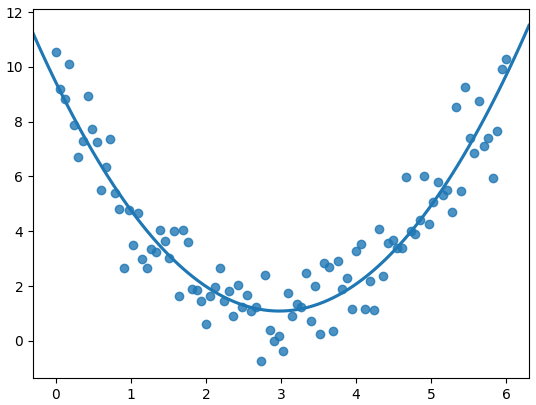
What the correlation coefficient sees:

Correlation only accounts for linear relationships
Correlation shouldn't be used blindly
df['x'].corr(df['y'])
0.081094
Always visualize your data

Mammal sleep data
print(msleep)
name genus vore order ... sleep_cycle awake brainwt bodywt
1 Cheetah Acinonyx carni Carnivora ... NaN 11.9 NaN 50.000
2 Owl monkey Aotus omni Primates ... NaN 7.0 0.01550 0.480
3 Mountain beaver Aplodontia herbi Rodentia ... NaN 9.6 NaN 1.350
4 Greater short-ta... Blarina omni Soricomorpha ... 0.133333 9.1 0.00029 0.019
5 Cow Bos herbi Artiodactyla ... 0.666667 20.0 0.42300 600.000
.. ... ... ... ... ... ... ... ... ...
79 Tree shrew Tupaia omni Scandentia ... 0.233333 15.1 0.00250 0.104
80 Bottle-nosed do... Tursiops carni Cetacea ... NaN 18.8 NaN 173.330
81 Genet Genetta carni Carnivora ... NaN 17.7 0.01750 2.000
82 Arctic fox Vulpes carni Carnivora ... NaN 11.5 0.04450 3.380
83 Red fox Vulpes carni Carnivora ... 0.350000 14.2 0.05040 4.230
Body weight vs. awake time
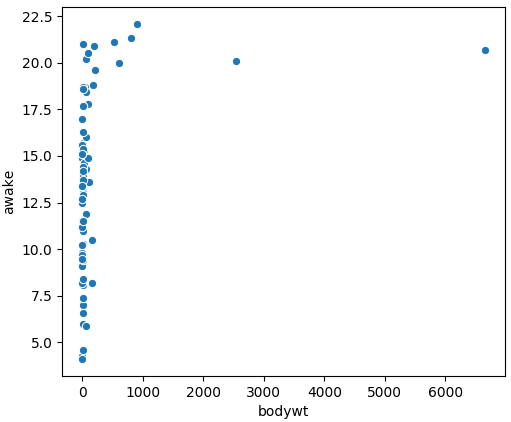
msleep['bodywt'].corr(msleep['awake'])
0.3119801
Distribution of body weight
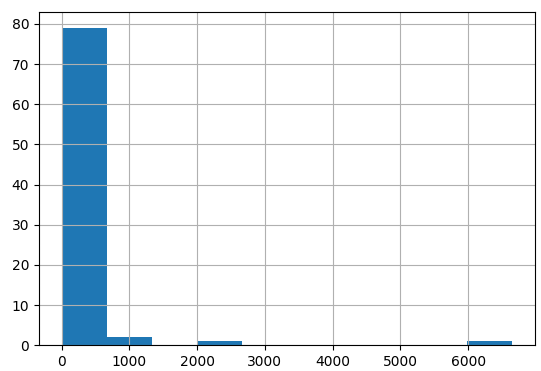
Log transformation
msleep['log_bodywt'] = np.log(msleep['bodywt'])sns.lmplot(x='log_bodywt', y='awake', data=msleep, ci=None) plt.show()
msleep['log_bodywt'].corr(msleep['awake'])
0.5687943

Other transformations
- Log transformation (
log(x)) - Square root transformation (
sqrt(x)) Reciprocal transformation (
1 / x)Combinations of these, e.g.:
log(x)andlog(y)sqrt(x)and1 / y
Why use a transformation?
- Certain statistical methods rely on variables having a linear relationship
- Correlation coefficient
- Linear regression
Correlation does not imply causation
x is correlated with y does not mean x causes y
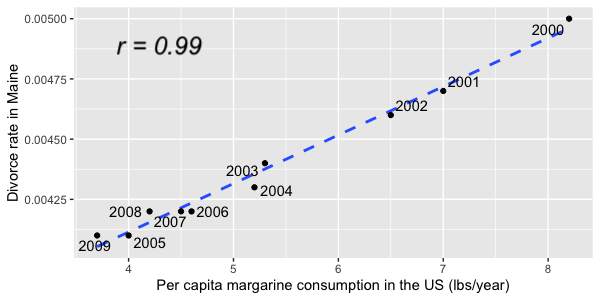
Confounding
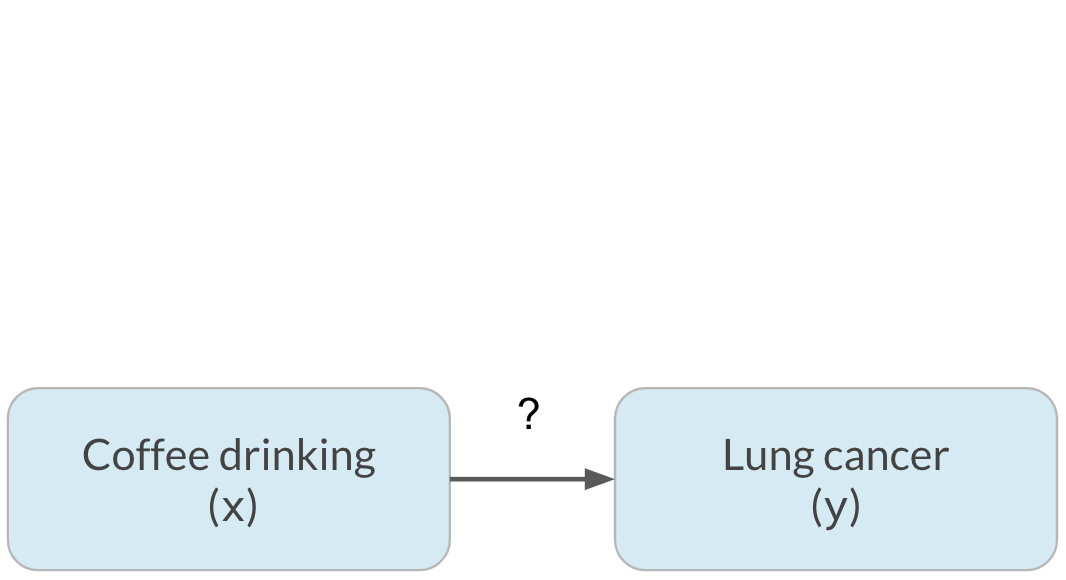
Confounding

Confounding

Confounding
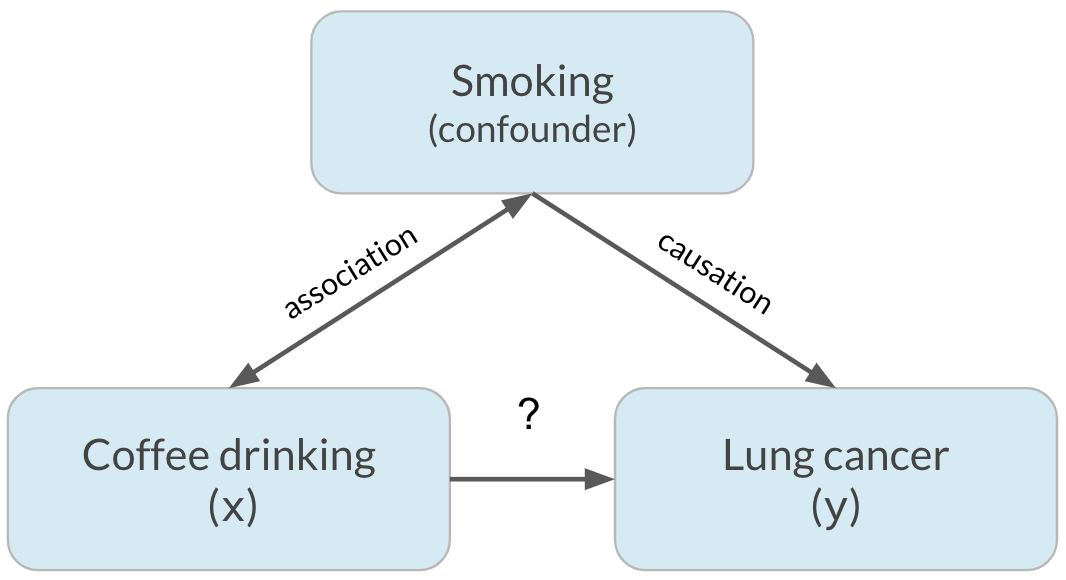
Confounding

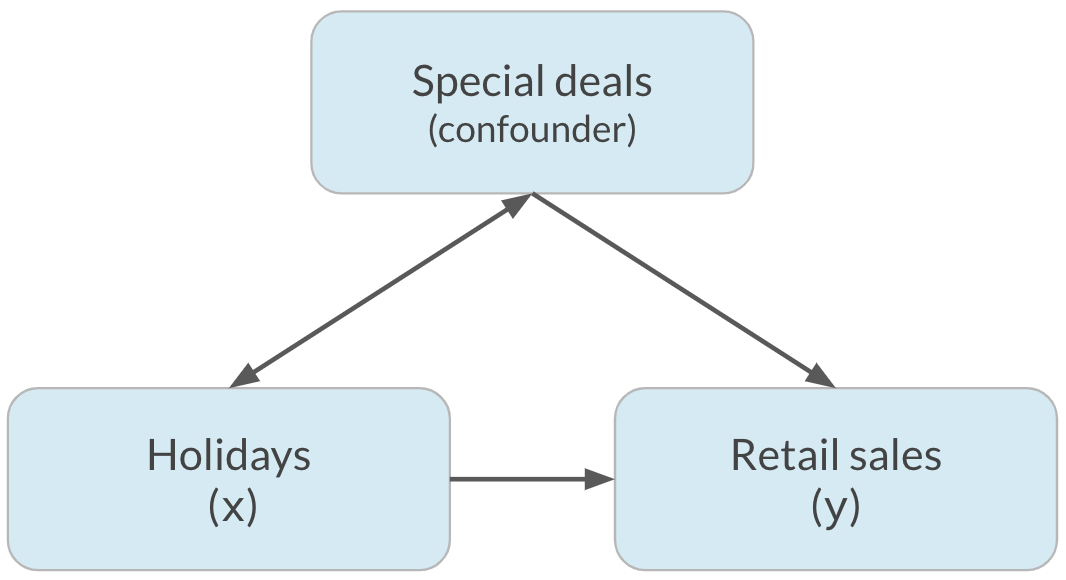
Let's practice!
Introduction to Statistics in Python

